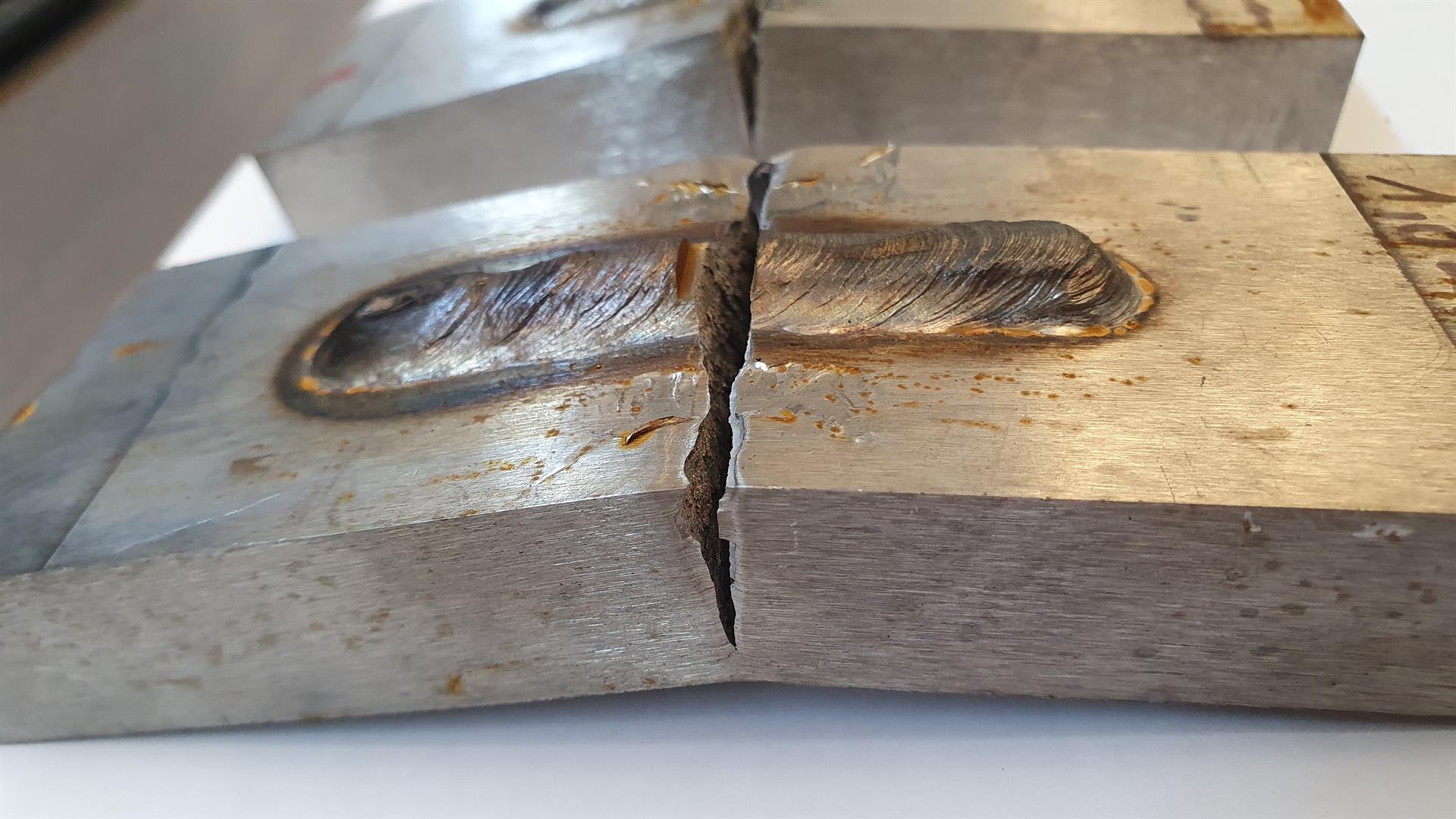Fracture Mechanics
Fracture Mechanics is a branch of mechanics that deals of the study of the cracks propagation in materials. Cracks are two-dimensional defects that cause the reduction of the resistant section and generate a high concentration of stresses.
Sider Test performs CTOD Tests according to BS7448-1 and ISO 12135
CTOD Test, Crack Tip Opening Displacement, measures the fracture toughness of a material that has a crack. It is used on materials that may show a certain plastic deformation before a failure occurs at the crack tip.
A fatigue crack is extended in a single edge notched bend or compact specimen by applying an alternating force within controlled limits. The specimen is then subjected to an increasing monotonic force.
Measurements are made of the forces and displacements to the point when either brittle crack extension occurs or the specimen reaches a maximum force condition. The applied force is plotted against displacement to define this point on a curve. This is analyzed, and when specified validity criteria are met, the point is used to determine a critical CTOD fracture toughness.
Sider Test performs Drop Weight Tests according to ASTM E208
Drop Weight Test determines the brittle ductile transition temperature (NDT – nil-ductility transition temperature) in ferritic steels with thickness ≥ 15.9 mm. The test is conducted by subjecting each of a series of specimens of a given material to a single impact load at a sequence of selected temperatures to determine the maximum temperature at which a specimen breaks.
The impact load is provided by a guided, free-falling weight with an energy of 340 to 610 J, depending on the yield strength of the steel to be tested. The test is carried out after conditioning the specimen to the predetermined temperature. The initial drop-weight test is performed at an estimated temperature to be near the NDT temperature.
The selection of test temperatures is based on finding, with as few specimens as possible, a lower temperature where the specimen breaks and an upper temperature where it doesn’t break, and then testing at intervals between these temperatures until the temperature limits for break and no-break performance are determined within 5 °C. Test at least two specimens that show no-break performance at a temperature 5 °C above the temperature judged to be the NDT temperature.

MORE INFORMATION
Ask a question or request a quote fulfilling the mask below
or call us at (+39) 0523 881 900
Required fields marked with *
YOU NEED ANOTHER TEST?
SIDERTEST
is ACCREDITED FOR A WIDE RANGE OF TESTS


